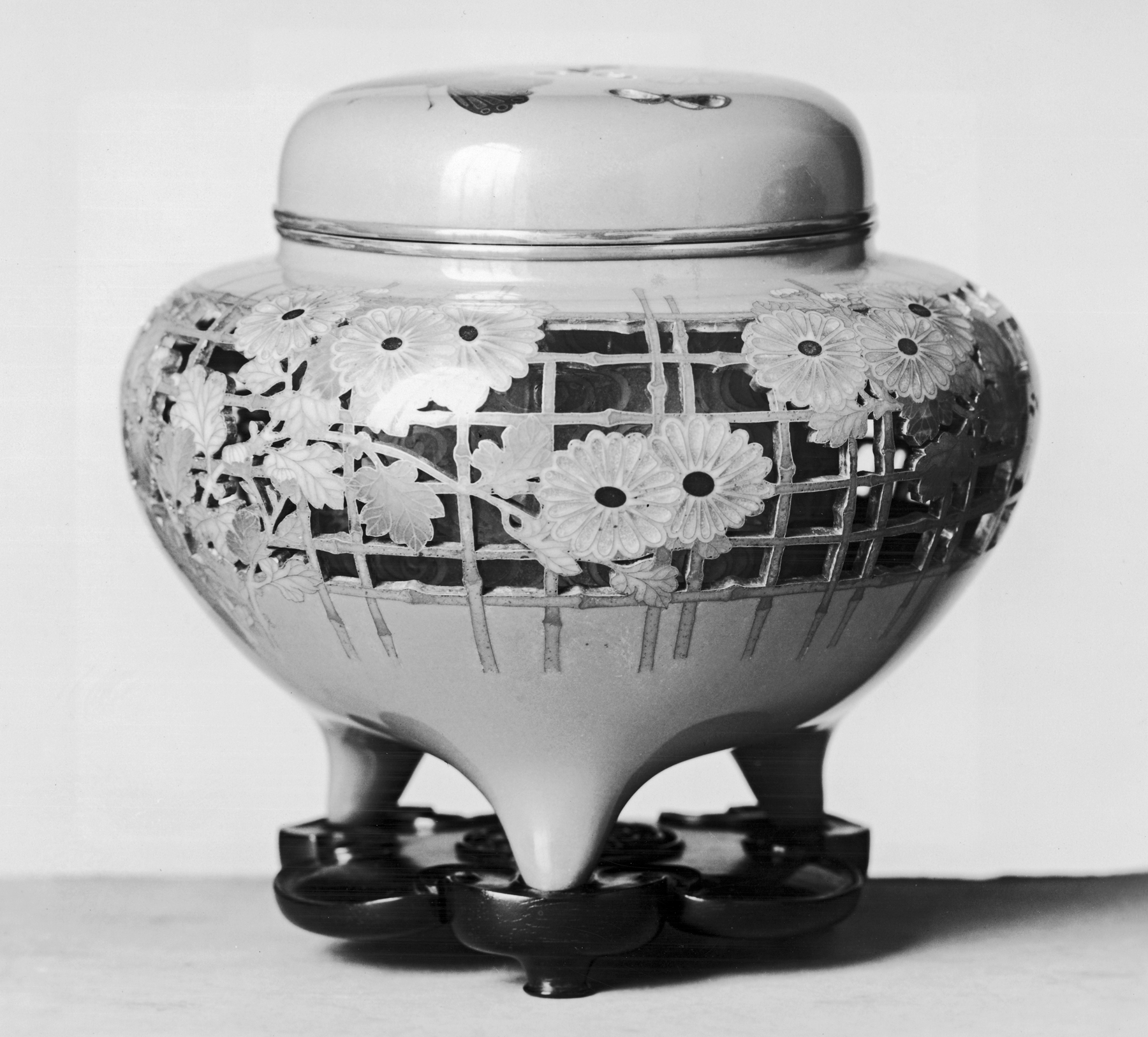Incense Burner with a Trellis and Chrysanthemums
(Japan and Korea )
This beige-colored incense burner features cut-away portions in between chrysanthemums and trellises that allow one to view the inner cylindrical liner. This liner depicts a stream in plique-a-jour blue enamels. The flower petals are also created with plique-a-jour enameling allowing light to pass through the form creating endless patterns of light and shadow across which the eye is meant to dance and play. Ando's choice to cover the body of this tripod with beige enamel is indicative of the fashionable nature of this type of decorative art. Like the annual colors released by contemporary fashion houses looking to set the tone for their new lines of clothing, enamelers at the Ando factory in Nagoya developed new colors that would key their newest decorative objects to the tastes of fashionable people in the major Japanese cities of Tokyo and Yokohama.
Inscription
Provenance
Provenance (from the French provenir, 'to come from/forth') is the chronology of the ownership, custody, or location of a historical object. Learn more about provenance at the Walters.
Panama-Pacific International Exposition, San Francisco, 1915; Henry Walters, Baltimore, 1915 [mode of acquisition unknown]; Walters Art Museum, 1931, by bequest.
Exhibitions
| 2025 | Japanese Cloisonne Enamels. The Walters Art Gallery, Baltimore. 1996-0. |
Geographies
Japan, Nagoya (Place of Origin)
Measurements
5 x 5 3/4 in. (12.7 x 14.6 cm)
Credit Line
Acquired by Henry Walters, 1915
Location in Museum
Not on view
Accession Number
In libraries, galleries, museums, and archives, an accession number is a unique identifier assigned to each object in the collection.
In libraries, galleries, museums, and archives, an accession number is a unique identifier assigned to each object in the collection.
44.544






